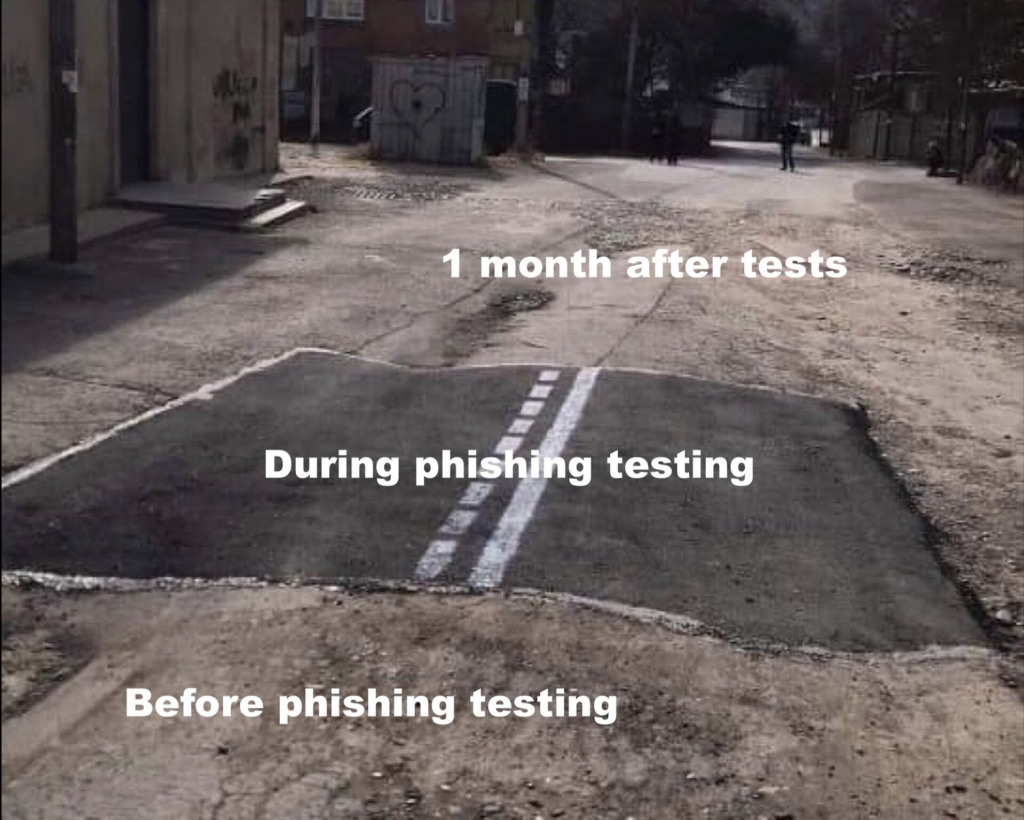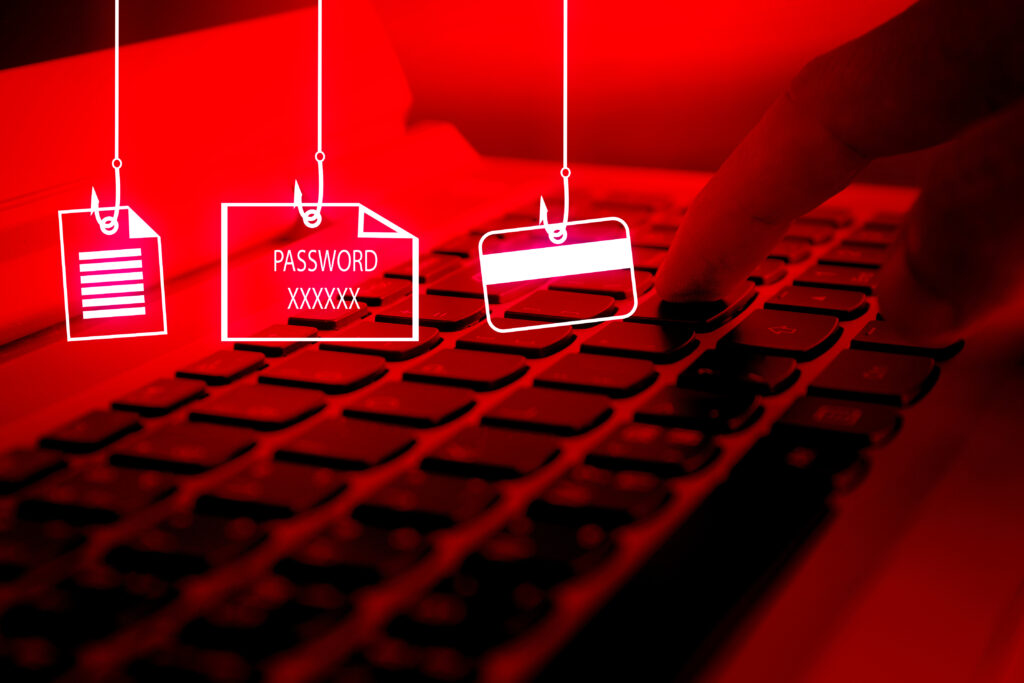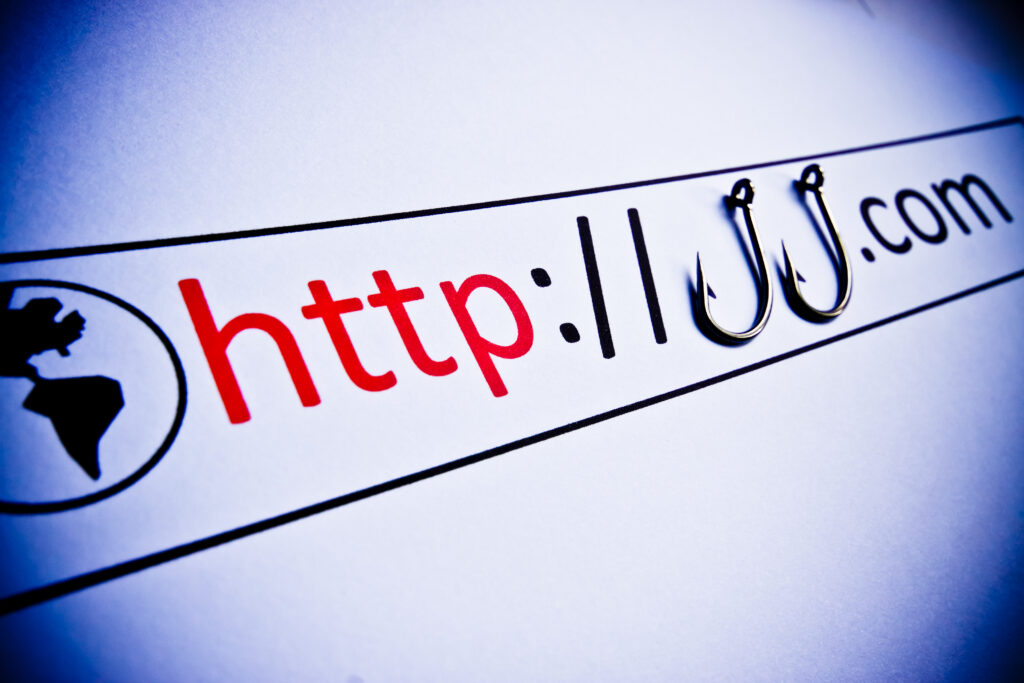Phishing attacks are a common form of cybercrime and pose a serious threat to businesses worldwide. Phishing occurs when cybercriminals send fake emails or messages with the goal of tricking employees into revealing sensitive information, such as passwords or bank details. To protect against these threats, many companies conduct phishing tests to assess employees’ ability to detect and respond to such attempts. Additionally, phishing tests combined with training help reduce company risks by enabling employees to better recognize phishing emails.
Continuous vs one-time phishing test, which to prefer? Is a one-time phishing test enough, or do employees need regular testing? This article will explore the pros and cons of continuous and one-time phishing tests.
What is phishing testing?
A phishing test simulates an attack to test employees. It tests their ability to spot and respond to fake emails and messages that mimic real cyber threats. A phishing test sends employees fake emails or messages. These may ask them to click a link, download an attachment, or provide login credentials. The test results show how well employees can spot and avoid phishing attempts. They also highlight areas needing more training.
Read more about phishing training.
One-time phishing tests
A one-time phishing test is done as a single event. Usually, during such testing, each employee is sent a phishing email. In this type of testing, the test is typically prepared specifically for the company, considering the IT systems in use and the company’s context.
When conducting one-time tests, it can be done by the IT or security team themselves by setting up the necessary tools and environments, or it can be purchased from a security testing service provider. The advantage of using an external partner is that they are more familiar with various phishing tests, already have the necessary environment in place for testing, and can adapt it more efficiently to the specific needs of the company.
Advantages of one-time phishing test
Less resources needed from company side – It captures the company’s IT and employee attention once. The testing is conducted once, and it provides an overview of the employees’ behaviour and company risks related to the phishing. Dealing with the test results does not require continuous attention.
Tailored to the company’s context – since one-time tests are usually done manually, they are customized to fit the specific company’s context. Such manual preparation of tests also allows the use of internal company information if desired, making the test even more challenging.
Cost effective – The cost of a one-time test depends on who conducts it and how, but it is usually slightly more affordable than the price of a year-round continuous testing service.
Disadvantages of one-time phishing tests
It does not provide a complete picture – A employee may not make a mistake with one specific phishing email, but this gives no assurance that they won’t fall for a slightly different one. For systematic phishing testing, various types of phishing emails and deception methods should be used.
Limited long-term impact – Employees may forget a test’s lessons without follow-up tests or training. For example, a small Estonian retailer might run a test. If it doesn’t reinforce the lessons learned, employees could revert to old habits.
No adaptation to evolving threats – Cyber threats and phishing tactics evolve constantly. A one-time test doesn’t prepare employees for new types of phishing attacks they may encounter in the future.
Doesn’t track improvement – Without tests, we can’t gauge if employee awareness and behaviour improve over time. If an employee fails a test once but isn’t retested, they might not have the opportunity to demonstrate growth or understanding.
Continuous phishing tests
Continuous phishing tests involve regularly testing employees, for example, monthly or quarterly. They may also be at random intervals. This approach keeps employees alert and improves their ability to detect phishing attempts.
A continuous phishing simulation is offered as a service, as done by Phishbite. However, it is also possible to conduct a continuous simulation in your own environment. In this case, it’s important to consider that setting up and maintaining such an environment requires a significant amount of work. If conducting the testing internally, there needs to be constant attention to creating and updating various scenarios, as well as planning how to link the testing with subsequent employee training.
Choosing a service provider may initially seem more expensive, but it can help reduce overall costs and significantly lessen the workload for the company.
Advantages of continuous phishing tests compared to one-time phishing test
Reinforces learning: Regular testing helps employees remain alert and mindful of phishing threats. A continuous program lets employees learn by practicing. This better equips them to handle real phishing attacks and different attack vectors, for example how cybercriminals trick people with different type of phishing links.
Higher awareness: According to the latest scientific research conducted by ETH Zurich scientists, periodic nudges are most effective in maintaining high employee awareness. The research shows that training alone is not sufficient to consolidate employees’ knowledge about phishing, whereas periodic nudges have a much greater impact.
It tracks progress over time. Continuous testing shows how employees’ awareness improves. Companies can test their training programs by using multiple tests. For instance, if the click rate on phishing emails drops from 20% to 5% in six months, it shows employees are more aware of the threats.
Adapts to evolving threats: Good continues phishing testing service provider updates their tests continuously. This ensures employees are ready for new threats. As phishing techniques evolve, so do the tests. This makes employees better at handling real-life scenarios.
Behavioural conditioning: Regular tests help to instil a security-conscious culture within the organization. Employees learn to question suspicious messages. This makes them less likely to fall for real phishing attacks.
Quick feedback and learning: Continuous testing lets firms quickly warn employees who fall for phishing. This instant correction helps them learn from their mistakes. It improves their behaviour on future tests.
Disadvantages of continuous phishing tests
Employee fatigue: Over-testing can cause fatigue. Employees tire of constant testing and pay less attention. This can lead to decreased effectiveness if not managed carefully. To avoid this, we must balance keeping employees alert with not over-testing them.
Potential trust issues: Employees might find phishing tests too invasive. They may feel it creates distrust between them and management. If not communicated well, employees might see the tests as traps, not learning tools.
Higher costs: Continuous testing gives better long-term results. But it is typically more expensive and needs constant monitoring and dealing with results.

Which approach is more effective: continuous vs one-time phishing test?
As seen from the analysis above, continuous testing provides better results and has a more long-term impact. However, it can be somewhat more bothersome for the company’s employees and requires readiness to regularly monitor the test results and respond to them when necessary.
According KnowB4 research: Groups that did weekly phishing security tests were 2.74 times more effective in reducing risk than groups that conducted less frequent testing.
The chosen approach also depends on the company’s risk level – companies that handle personal or other sensitive data (e.g., banks, insurance, healthcare, IT companies developing business-critical information systems, critical infrastructure companies, and production companies heavily dependent on IT) should consider opting for a continuous phishing testing service.
In some cases, a hybrid approach might be the best solution. A company could start with a one-time test to gauge awareness. Then, it could use continuous testing for ongoing improvement. This combination allows organizations to address immediate risks while building long-term employee awareness.
Measuring the success of phishing tests
To make the most of phishing tests, companies must track their success. They should measure specific metrics. Key indicators include:
Click-through rate: The percentage of employees who clicked on a phishing email link
Training compilation rate: When phishing test clickers are followed by employee training, how many of the employees who made a mistake have actually completed the training to the end.
Reporting rate: The number of employees who reported phishing emails to IT or security.
Best practices for phishing tests
To make phishing tests effective, companies should follow a few best practices:
State the purpose: Phishing tests aim to raise awareness, not to trick or punish employees.Encourage a workplace culture that values cybersecurity. Make sure employees feel safe reporting suspicious activities.
Use personalized tests: Use a platform that sends personalized phishing tests. Cybercriminals are also increasingly using personalized approaches that are harder to recognize.
Be versatile in testing: vary phishing emails and deception methods to give employees an idea that phishing emails can come in many different forms. Send different phishing tests to different employees so that the tests don’t become too predictable due to information sharing among staff.
Use real-world scenarios. Make the phishing tests realistic and current. This will better prepare employees for actual threats.
Provide feedback and training. After each test, train employees who fall for the phishing attempts. A good phishing simulation platform does this automatically by offering relevant training to the employee who made a mistake.
Phishbite phishing training platform
Phishbite is an easy-to-use AI-powered phishing simulation and cyber security training platform to reduce cybersecurity risks by increasing employee awareness.
Phishbite is designed for small and medium-sized businesses. It offers a comprehensive solution for sending phishing simulations and increasing employees’ security awareness.
Reduce your phishing related human risks with Phishbite before it’s too late




